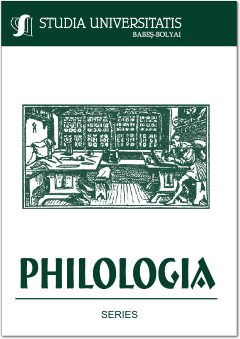OBSERVATIONS ON THE REALIZATION OF THE MORPHOLOGICAL OPPOSITION OF NUMBER IN NEUTER NOUNS WHOSE ROOT ENDS IN –E
OBSERVATIONS ON THE REALIZATION OF THE MORPHOLOGICAL OPPOSITION OF NUMBER IN NEUTER NOUNS WHOSE ROOT ENDS IN –E
Author(s): Cristina BocoșSubject(s): Morphology
Published by: Studia Universitatis Babes-Bolyai
Keywords: neuter gender; morphological opposition of number; etymological desinences –e/–uri; neuter nouns with the root ending in –e;
Summary/Abstract: Observations on the Realization of the Morphological Opposition of Number in Neuter Nouns Whose Root Ends in –e. The study aims to identify the main rules governing the distribution of the etymological desinences for plural nouns (–e and –uri), in order to establish the principles that should be applied in the case of neuter nouns with the root ending in –e, a category of nouns that has been little studied in the literature. As neologisms are borrowed from other languages, this category is significantly enriched, becoming increasingly fluctuant and heterogeneous. Since the previously formulated rules do not apply consistently in the case of these nouns, the –e at the end of the root – which could be confused with the homonymous plural desinence – is the only element that imposes either the neutralisation of the number opposition (nume [name], index [index], faringe [pharynx], etc.), or its realisation exclusively by using the desinence –uri (degradeuri [colour gradients], café-frappé-uri [frappé coffees], puzzle-uri [puzzles], etc.).
Journal: Studia Universitatis Babes-Bolyai - Philologia
- Issue Year: 65/2020
- Issue No: 1
- Page Range: 263-274
- Page Count: 12
- Language: English

